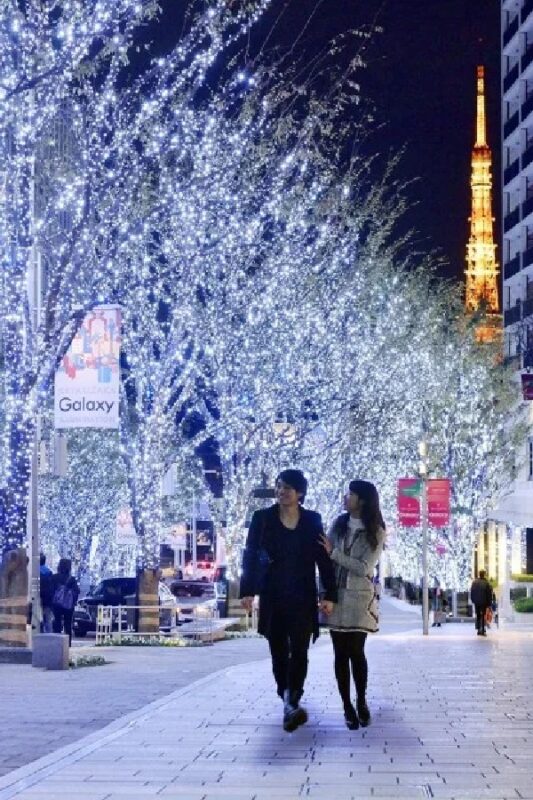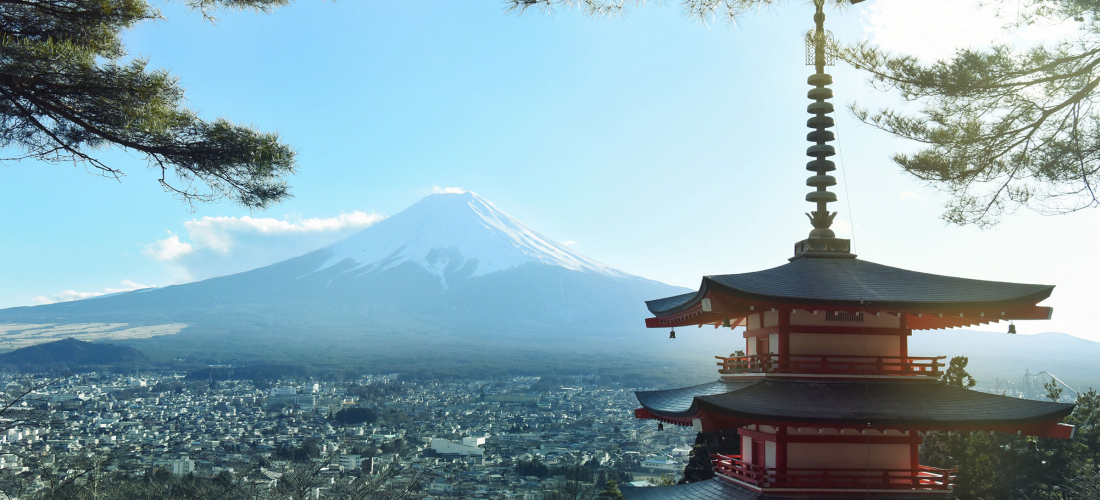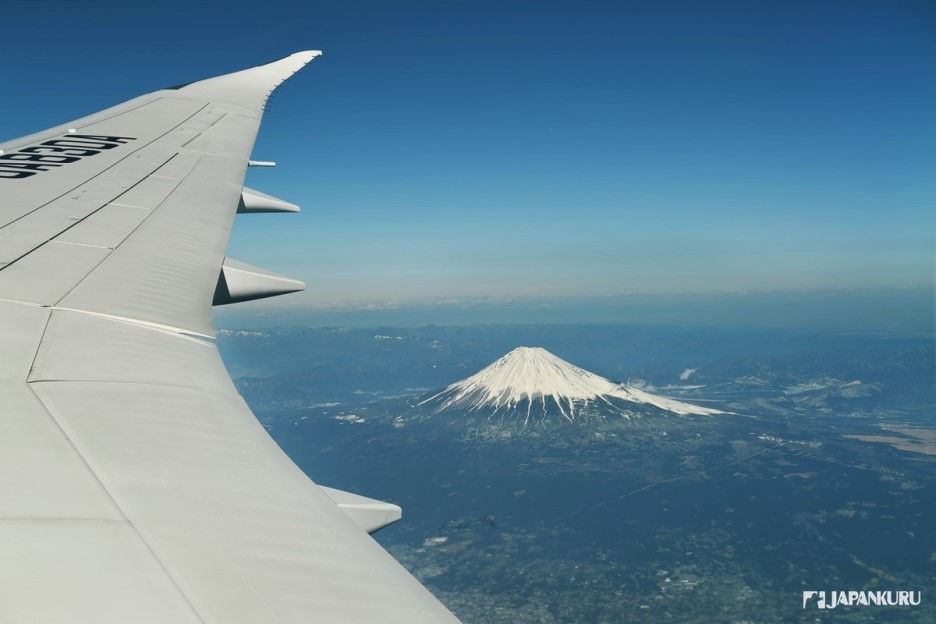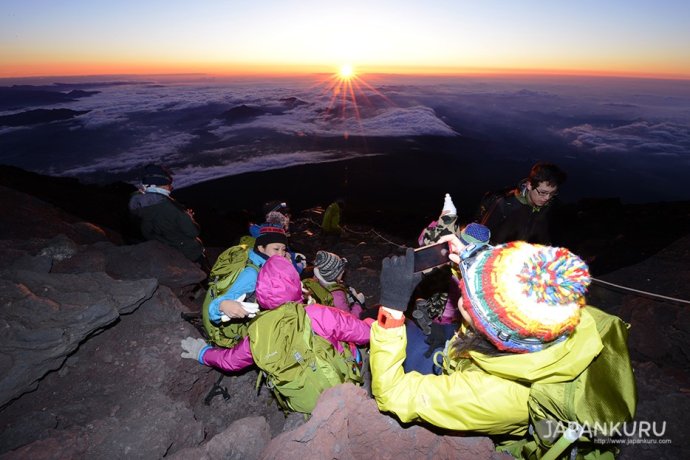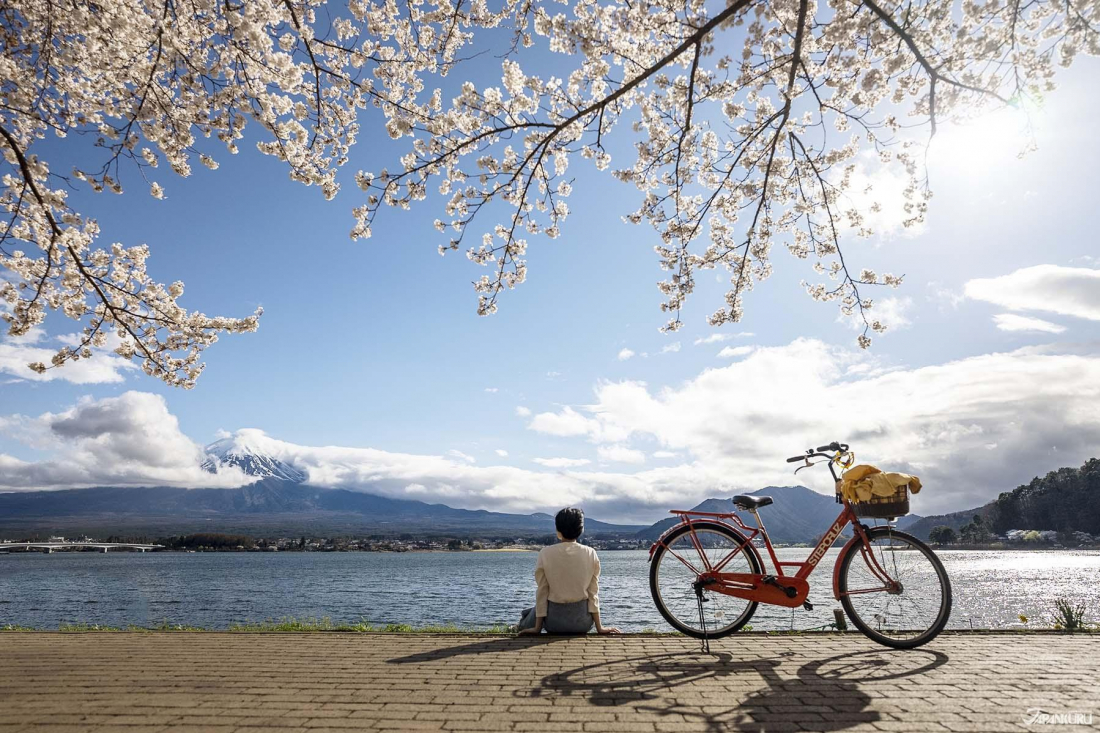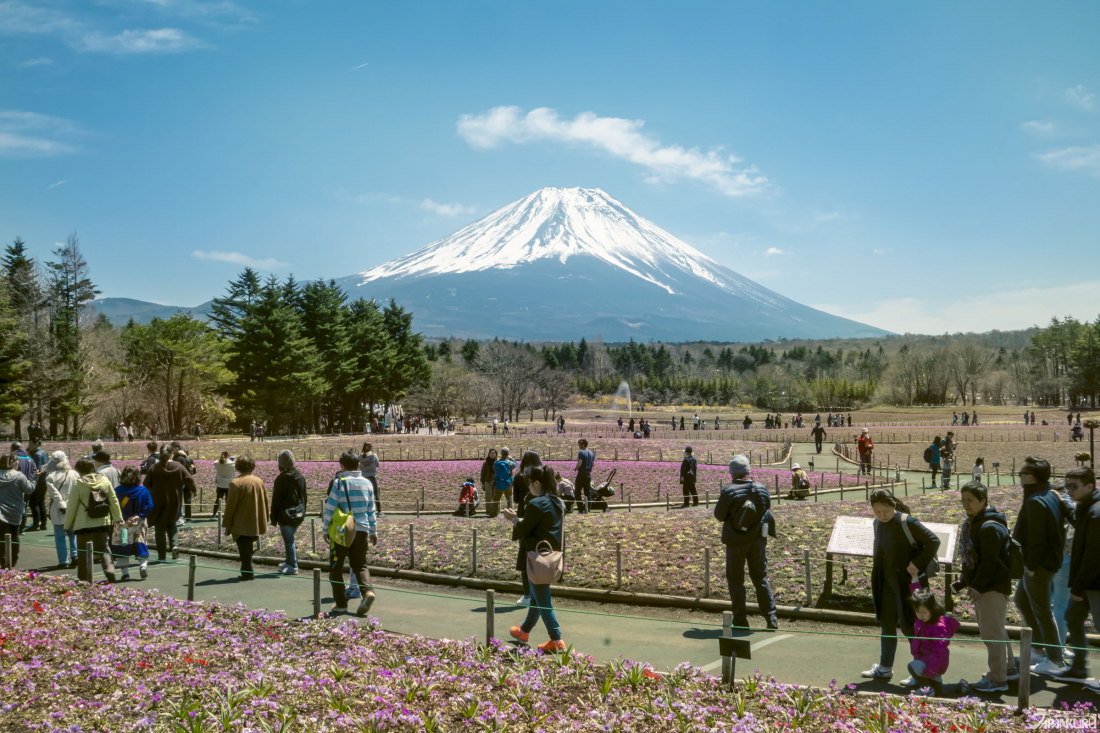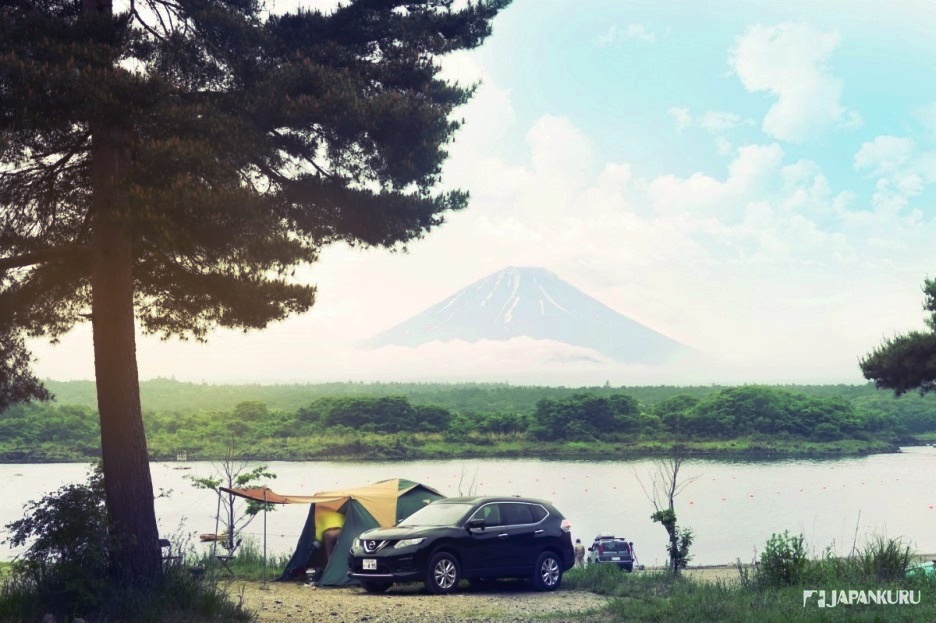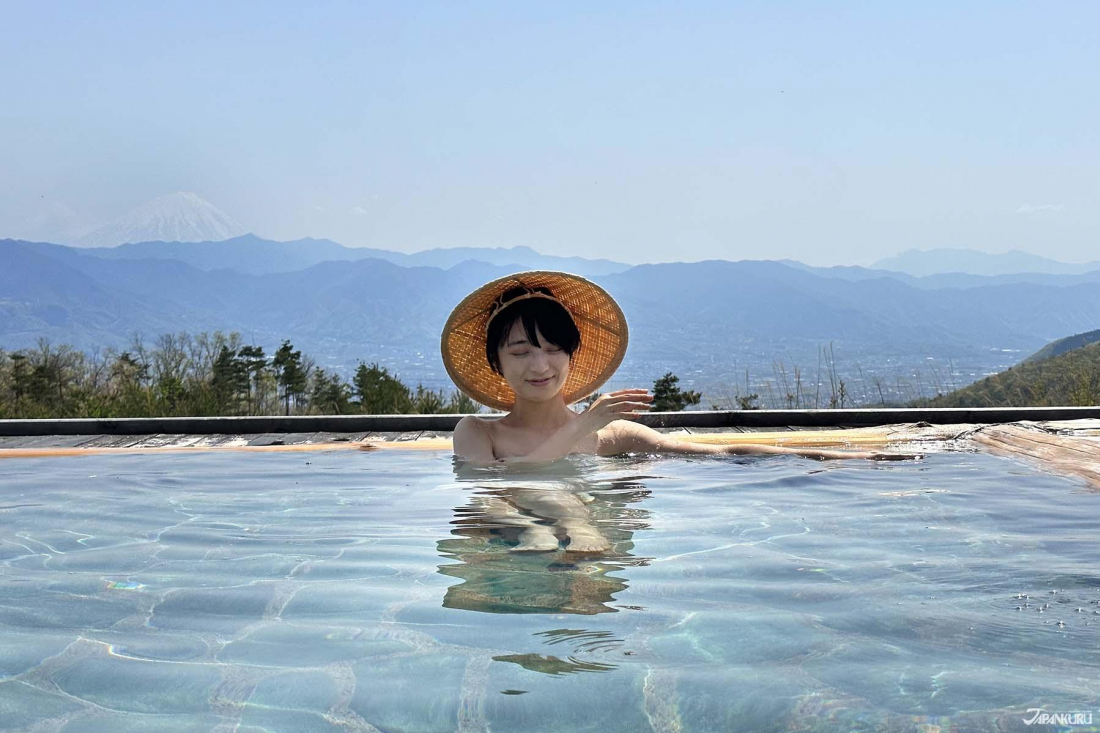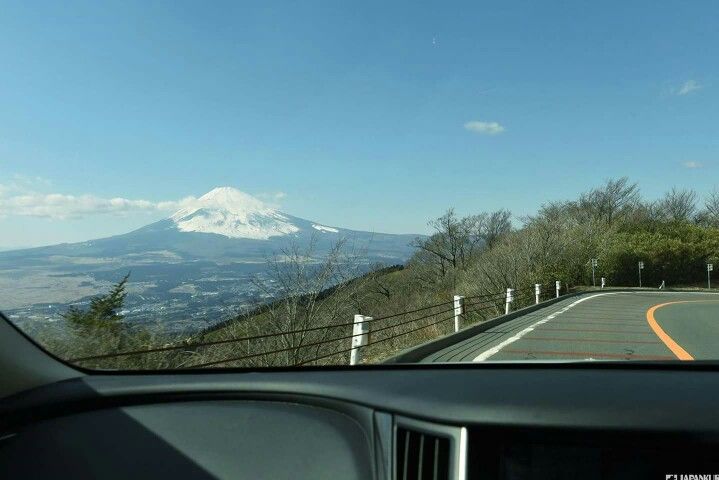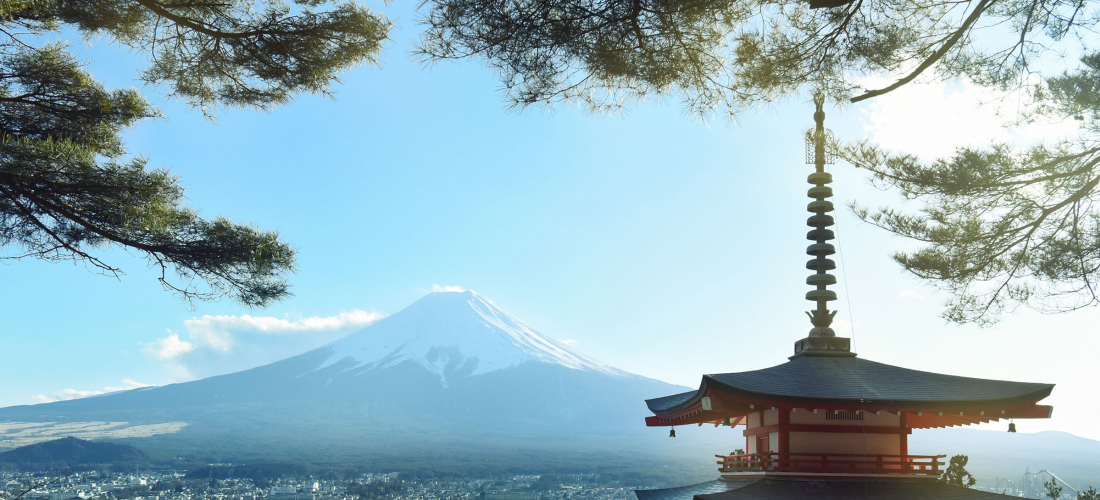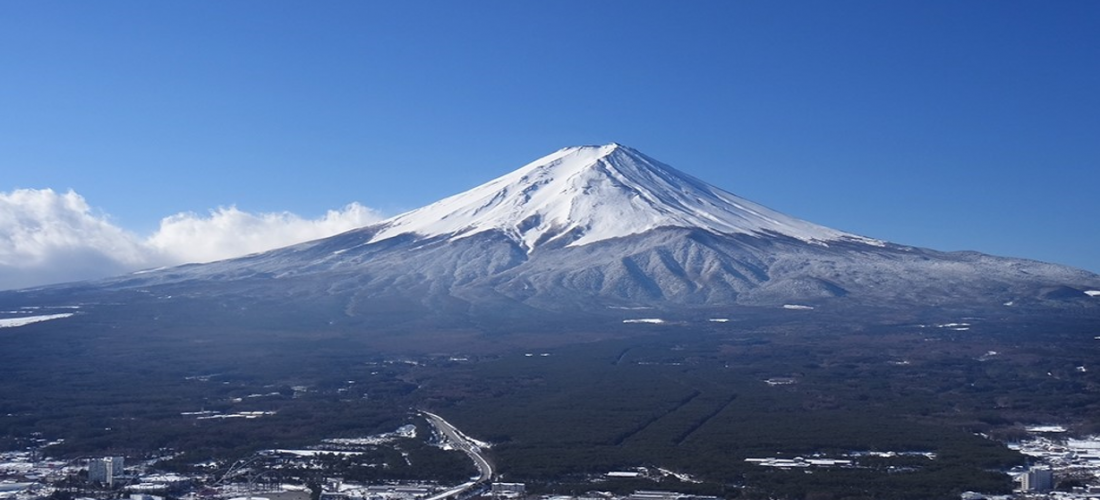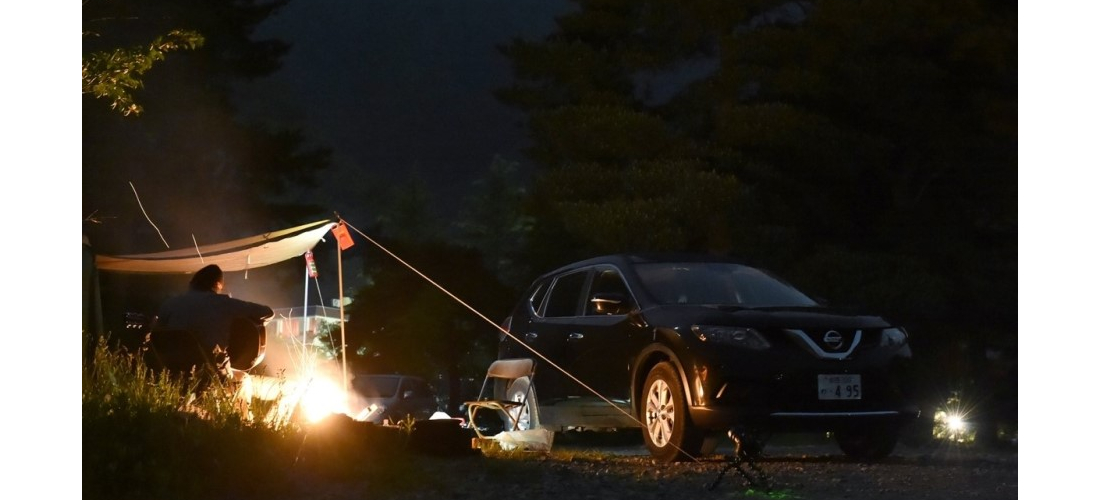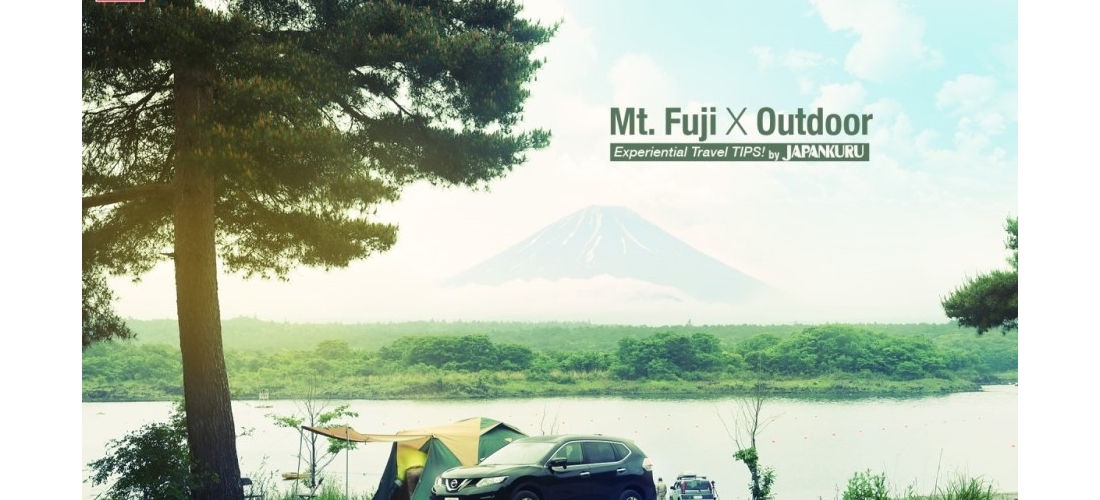CONTENTS
Travelers love to climb Mt. Fuji, but there’s even more fun to be had around the iconic mountain.
Seeing Mt. Fuji
The highest mountain in Japan, and a symbol of the nation, some might say a trip to Japan isn't complete without a visit to Mt. Fuji. But as famous Japanese paintings and prints from the past few centuries can attest, there's more to do at this famous mountain than just reaching the top. Whether you love to hike, or just want to see all the gorgeous scenery from the foot of the mountain, there's plenty to do on and around Mt. Fuji!
Climbing Up the Mountain, and Climbing Under the Mountain
Reaching the peak of Mt. Fuji can be a magical experience, and many hikers time their climbs to reach the top of the mountain at sunrise. Start in the afternoon, book a night in a mountain hut for a few hours of sleep, and then finish your hike in the early hours of the morning to catch the rising sun from what feels like the top of the world! Just be aware – this is a serious hike! Locals dressed in full hiking gear sometimes marvel at the tourists who arrive at the mountain in jeans and flip-flops. Don't be that tourist! There are plenty of detailed guides to climbing Mt. Fuji out there, from what to wear to when to go. Due to the dangers of climbing when the mountain is covered in snow (off-season hikers have made news in recent years for tragically falling to their deaths from Mt. Fuji), climbing season on the mountain is officially announced every year after looking at the weather patterns, although the dates generally fall from early July to mid-September. Make sure to plan accordingly!
One alternative to climbing up the side of Mt. Fuji is to burrow right into the heart of the mountain! Mt. Fuji is technically an active volcano, and a huge eruption in the year 864 reshaped the local landscape, creating the shapes of the famous nearby lakes and simultaneously forming a tangle of lava tubes, still open under the mountainside and accessible from Aokigahara Forest. Thanks to the cool temperatures that last throughout the year, Fugaku Fuketsu (富岳風穴, AKA Fugaku Wind Cave) and Narusawa Hyoketsu (鳴沢氷穴, AKA Narusawa Ice Cave) are particularly popular with sightseers, especially in the hot summer months.
Admiring Mt. Fuji from Afar
Ask a local and you'll quickly learn – most Japanese sightseers who want to go admire the beauty of Mt. Fuji don't bother climbing the mountain. Many will even tell you that the dusty trails along the mountainside only offer its ugliest angle, even joking that "Mt. Fuji isn't a climbing mountain, it's a viewing mountain." (Although the view from the top might still be worth it.) Instead, vacationers often head to the foothills of Mt. Fuji, where the mountain's silhouette provides a beautiful backdrop for the lakeside resort towns in the Fuji Five Lakes area. The mountain itself actually sits on the border between two of Japan's prefectures, Shizuoka and Yamanashi, but the Yamanashi towns north of Mt. Fuji have done a better job of attracting sightseers over the years. The most famous of these little communities is probably Kawaguchiko, which has a number of little museums and sightseeing destinations, but there are traditional Japanese ryokan hotels all around the region. You can lounge around wearing a yukata and eating traditional Japanese food, or head out for a cruise across the lakes and a meal of local hoto noodles, while soaking up the Mt. Fuji atmosphere all day long.
The nearby city of Fujiyoshida is where you'll find these two famous spots, both enormously popular among photographers!
In spring, just after cherry blossom season (mid-April to late May), the Fuji Shibazakura Festival held at Fuji Motosuko Resort in Kawaguchiko also offers a unique view of the iconic mountain in front of a field of pretty pink moss phlox flowers.
Local Marathons & Races
Perhaps the most scenic marathon in Japan, if not the world. Runners will rejoice to hear that the Mt. Fuji Marathon offers a chance to enjoy a 42km right loop directly beside Mt. Fuji each November! The marathon course traces a path around Lake Kawaguchiko and Lake Saiko, giving runners a chance to run through the cool lake breeze and the picturesque scenery, all while taking in the view of Mt. Fuji from a variety of lovely angles. For a slightly easier run, the Mt. Fuji Marathon also offers a 10.5km charity fun run, for a similar but less grueling experience.
For committed athletes, The Ultra-Trail Mt. Fuji is an even more challenging option that takes place in the spring. The 100-mile (165km) course follows a winding trail three-quarters of the way around the base of the mountain, climbing up nearby ridges and back down to lakeside paths, finally looping back around to finish at the popular local amusement park Fuji-Q Highland. It's not a run for the faint of heart, that's for sure.
Of course, casual runners can enjoy the lakeside paths at the foot of Mt. Fuji any time of year, without all the official fanfare!
Camping in the Foothills
For travelers staying around Mt. Fuji, accommodation options usually revolve around traditional Japanese-style ryokan hotels, but one fun and slightly less fancy alternative is camping. There are a number of camping grounds in the Fuji Five Lakes area, each offering different facilities, but all in full view of the majestic mountain. Whether you want to bring a tent, stay in a simple cabin, or try a little luxury glamping, there are all kinds of options. Many of the most popular grounds are right on the water of Lake Saiko or Lake Shoji, so there's not only a great view, but access to boat piers and lake activities as well! The photo above is from a Japankuru trip a few years back, at Shojiko Camping Cottage.
Hot Springs
Whether you're recovering from a tough hike to the peak of Mt. Fuji, or just want a beautiful place to soak in Japan's famous onsen baths, the area around Mt. Fuji is a great place to indulge in the luxuries of Japan's hot springs. Many of the ryokan hotels at the foot of the mountain and around the Fuji Five Lakes have their own onsen baths, and a number of those include open-air baths for maximum Mt. Fuji visibility. Not far from the mountain you'll also find a handful of so-called "onsen towns," which are famous around Japan for having particularly plentiful, luxurious, or high-quality hot springs. While slightly farther away from the mountain, both Hottarakashi Onsen and Hakone have huge reputations and onsen facilities with perfectly picturesque views of Mt. Fuji! (Eagle-eyed readers will even see it in this cloudy picture from Hottarakashi Onsen.)
All Around the Mountain
From arduous hikes to heavenly hot springs, there's plenty to enjoy on and around Mt. Fuji, whether you like to push yourself to the limits or just take it easy all day long. Whatever your itinerary looks like, there's no denying that Mt. Fuji is a symbol of Japan, and it's worth fitting into your schedule!
For more info and updates from Japan, check Japankuru for new articles, and don't forget to follow us on Twitter, Instagram, and Facebook!
Details
NAME:Mount Fuji (富士山)
COMMENT
FEATURED MEDIA
VIEW MORE 
A New Tokyo Animal Destination: Relax & Learn About the World’s Animals in Japan
#pr #japankuru #anitouch #anitouchtokyodome #capybara #capybaracafe #animalcafe #tokyotrip #japantrip #카피바라 #애니터치 #아이와가볼만한곳 #도쿄여행 #가족여행 #東京旅遊 #東京親子景點 #日本動物互動體驗 #水豚泡澡 #東京巨蛋城 #เที่ยวญี่ปุ่น2025 #ที่เที่ยวครอบครัว #สวนสัตว์ในร่ม #TokyoDomeCity #anitouchtokyodome

Shohei Ohtani Collab Developed Products & Other Japanese Drugstore Recommendations From Kowa
#pr #japankuru
#kowa #syncronkowa #japanshopping #preworkout #postworkout #tokyoshopping #japantrip #일본쇼핑 #일본이온음료 #오타니 #오타니쇼헤이 #코와 #興和 #日本必買 #日本旅遊 #運動補充能量 #運動飲品 #ช้อปปิ้งญี่ปุ่น #เครื่องดื่มออกกำลังกาย #นักกีฬา #ผลิตภัณฑ์ญี่ปุ่น #อาหารเสริมญี่ปุ่น

도쿄 근교 당일치기 여행 추천! 작은 에도라 불리는 ‘가와고에’
세이부 ‘가와고에 패스(디지털)’ 하나면 편리하게 이동 + 가성비까지 완벽하게! 필름카메라 감성 가득한 레트로 거리 길거리 먹방부터 귀여움 끝판왕 핫플&포토 스폿까지 총집합!
Looking for day trips from Tokyo? Try Kawagoe, AKA Little Edo!
Use the SEIBU KAWAGOE PASS (Digital) for easy, affordable transportation!
Check out the historic streets of Kawagoe for some great street food and plenty of picturesque retro photo ops.
#pr #japankuru #도쿄근교여행 #가와고에 #가와고에패스 #세이부패스 #기모노체험 #가와고에여행 #도쿄여행코스 #도쿄근교당일치기 #세이부가와고에패스
#tokyotrip #kawagoe #tokyodaytrip #seibukawagoepass #kimono #japantrip

Hirakata Park, Osaka: Enjoy the Classic Japanese Theme Park Experience!
#pr #japankuru #hirakatapark #amusementpark #japantrip #osakatrip #familytrip #rollercoaster #retrôvibes #枚方公園 #大阪旅遊 #關西私房景點 #日本親子旅行 #日本遊樂園 #木造雲霄飛車 #히라카타파크 #สวนสนุกฮิราคาตะพาร์ค

🍵Love Matcha? Upgrade Your Matcha Experience With Tsujiri!
・160년 전통 일본 말차 브랜드 츠지리에서 말차 덕후들이 픽한 인기템만 골라봤어요
・抹茶控的天堂!甜點、餅乾、飲品一次滿足,連伴手禮都幫你列好清單了
・ส่องมัทฉะสุดฮิต พร้อมพาเที่ยวร้านดังในอุจิ เกียวโต
#pr #japankuru #matcha #matchalover #uji #kyoto #japantrip #ujimatcha #matchalatte #matchasweets #tsujiri #말차 #말차덕후 #츠지리 #교토여행 #말차라떼 #辻利抹茶 #抹茶控 #日本抹茶 #宇治 #宇治抹茶 #日本伴手禮 #抹茶拿鐵 #抹茶甜點 #มัทฉะ #ของฝากญี่ปุ่น #ชาเขียวญี่ปุ่น #ซึจิริ #เกียวโต

・What Is Nenaito? And How Does This Sleep Care Supplement Work?
・你的睡眠保健品——認識「睡眠茶氨酸錠」
・수면 케어 서플리먼트 ‘네나이토’란?
・ผลิตภัณฑ์เสริมอาหารดูแลการนอน “Nenaito(ネナイト)” คืออะไร?
#pr #japankuru #sleepcare #japanshopping #nenaito #sleepsupplement #asahi #睡眠茶氨酸錠 #睡眠保健 #朝日 #l茶胺酸 #日本藥妝 #日本必買 #일본쇼핑 #수면 #건강하자 #네나이토 #일본영양제 #อาหารเสริมญี่ปุ่น #ช้อปปิ้งญี่ปุ่น #ร้านขายยาญี่ปุ่น #ดูแลตัวเองก่อนนอน #อาซาฮิ

Japanese Drugstore Must-Buys! Essential Items from Hisamitsu® Pharmaceutical
#PR #japankuru #hisamitsu #salonpas #feitas #hisamitsupharmaceutical #japanshopping #tokyoshopping #traveltips #japanhaul #japantrip #japantravel

Whether you grew up with Dragon Ball or you just fell in love with Dragon Ball DAIMA, you'll like the newest JINS collab. Shop this limited-edition Dragon Ball accessory collection to find some of the best Dragon Ball merchandise in Japan!
>> Find out more at Japankuru.com! (link in bio)
#japankuru #dragonball #dragonballdaima #animecollab #japanshopping #jins #japaneseglasses #japantravel #animemerch #pr

This month, Japankuru teamed up with @official_korekoko to invite three influencers (originally from Thailand, China, and Taiwan) on a trip to Yokohama. Check out the article (in Chinese) on Japankuru.com for all of their travel tips and photography hints - and look forward to more cool collaborations coming soon!
【橫濱夜散策 x 教你怎麼拍出網美照 📸✨】
每次來日本玩,是不是都會先找旅日網紅的推薦清單?
這次,我們邀請擁有日本豐富旅遊經驗的🇹🇭泰國、🇨🇳中國、🇹🇼台灣網紅,帶你走進夜晚的橫濱!從玩樂路線到拍照技巧,教你怎麼拍出最美的夜景照。那些熟悉的景點,換個視角說不定會有新發現~快跟他們一起出發吧!
#japankuru #橫濱紅磚倉庫 #汽車道 #中華街 #yokohama #japankuru #橫濱紅磚倉庫 #汽車道 #中華街 #yokohama #yokohamaredbrickwarehouse #yokohamachinatown

If you’re a fan of Vivienne Westwood's Japanese designs, and you’re looking forward to shopping in Harajuku this summer, we’ve got important news for you. Vivienne Westwood RED LABEL Laforet Harajuku is now closed for renovations - but the grand reopening is scheduled for July!
>> Find out more at Japankuru.com! (link in bio)
#japankuru #viviennewestwood #harajuku #omotesando #viviennewestwoodredlabel #viviennewestwoodjapan #비비안웨스트우드 #오모테산도 #하라주쿠 #日本購物 #薇薇安魏斯伍德 #日本時尚 #原宿 #表參道 #japantrip #japanshopping #pr

Ready to see TeamLab in Kyoto!? At TeamLab Biovortex Kyoto, the collective is taking their acclaimed immersive art and bringing it to Japan's ancient capital. We can't wait to see it for ourselves this autumn!
>> Find out more at Japankuru.com! (link in bio)
#japankuru #teamlab #teamlabbiovortex #kyoto #kyototrip #japantravel #artnews
Photos courtesy of teamLab, Exhibition view of teamLab Biovortex Kyoto, 2025, Kyoto ® teamLab, courtesy Pace Gallery

Japanese Makeup Shopping • A Trip to Kamakura & Enoshima With Canmake’s Cool-Toned Summer Makeup
#pr #canmake #enoshima #enoden #에노시마 #캔메이크 #japanesemakeup #japanesecosmetics

⚔️The Robot Restaurant is gone, but the Samurai Restaurant is here to take its place. Check it out, and don't forget your coupon!
🍣신주쿠의 명소 로봇 레스토랑이 사무라이 레스토랑으로 부활! 절찬 쿠폰 발급중
💃18歲以上才能入場的歌舞秀,和你想的不一樣!拿好優惠券去看看~
#tokyo #shinjuku #samurairestaurant #robotrestaurant #tokyotrip #도쿄여행 #신주쿠 #사무라이레스토랑 #이색체험 #할인이벤트 #歌舞伎町 #東京景點 #武士餐廳 #日本表演 #日本文化體驗 #japankuru #japantrip #japantravel #japanlovers #japan_of_insta

Japanese appliance & electronics shopping with our KOJIMA x BicCamera coupon!
用JAPANKURU的KOJIMA x BicCamera優惠券買這些正好❤️
코지마 x 빅 카메라 쿠폰으로 일본 가전 제품 쇼핑하기
#pr #japankuru #japanshopping #kojima #biccamera #japaneseskincare #yaman #dji #osmopocket3 #skincaredevice #日本購物 #美容儀 #相機 #雅萌 #日本家電 #일본여행 #면세 #여행꿀팁 #일본쇼핑리스트 #쿠폰 #일본쇼핑 #일본브랜드 #할인 #코지마 #빅카메라 #japankurucoupon
MAP OF JAPAN
SEARCH BY REGION

LATEST
VIEW MOREEVENT CALENDAR
VIEW MORE